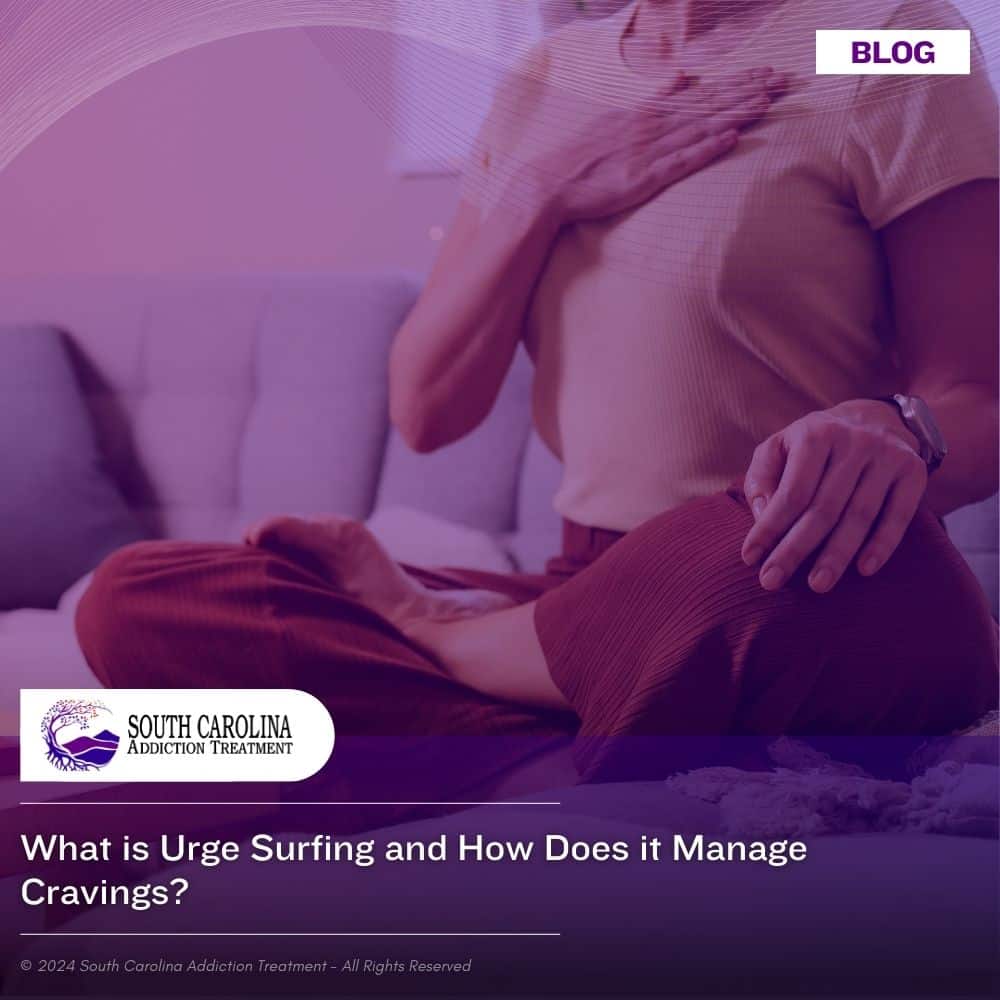What is Urge Surfing and How Does it Manage Cravings?

Medically Verified: 2/1/24
Medical Reviewer
Chief Editor

All of the information on this page has been reviewed and verified by a certified addiction professional.
Addiction is destructive. It can damage your relationships, steal your memories, and chip away at your mental and physical health.
Drug and alcohol use changes how your brain works. Over time, you may develop a physical dependence on addictive substances. It can be very challenging to quit using them without professional help.
Substance abuse treatment programs can help you stop using drugs and alcohol safely. It can give you the tools to complete detox and begin recovery.
However, recovery is not always an easy path. Many people continue to experience intense urges to use drugs and alcohol for a long time after they stop. Learning how to manage these cravings is essential to long-term success in recovery.
Urge surfing is a mindfulness technique that can help you avoid relapse. It involves using breathing exercises and other mindfulness techniques to “ride the wave” of a craving. Urge surfing can be very helpful, especially in the early stages of recovery.
This article will explore how urge surfing in recovery may help you stay sober. You will also learn about mindfulness-based relapse prevention and how to find addiction treatment.
Contact the South Carolina Addiction Treatment team now to explore our holistic addiction treatment programs. You may also schedule an intake appointment or ask questions.
What is an Urge?
An urge is a compulsion to do something. People in recovery from addiction may experience intense urges to use addictive substances.
During an urge, people may feel like they want to use drugs or alcohol. They may feel like they would do anything to get them.
Urges and cravings may cause people to act impulsively. They may react to the craving without thinking about it. Strong urges can threaten sobriety and derail people’s progress in recovery.
What Causes an Urge?
Drug and alcohol abuse can “rewire” your brain. Your brain and body may become physically dependent on these substances. Quitting is difficult because your brain sends you messages to use drugs or drink–and they can be hard to resist.
Some common things that may trigger an urge include:
- Challenging emotions, such as anger, sadness, anxiety, or boredom
- Loneliness
- Things that remind you of substance use–certain people, places, smells, objects, etc.
- Poor self-worth
- Feeling hopeless
- Shame or guilt
For some, an urge may feel like physical sensations within the body. People may feel physically and mentally uncomfortable during an urge. Some may feel anxious or agitated.
An urge can feel intense or long. You may feel like the only thing that will end the craving is to give in and use drugs and alcohol again. Without adequate coping skills or support, many people relapse.
What is Urge Surfing?
For many years, addiction treatment programs advocated that people had to have willpower to resist a relapse. However, relying only on a person’s willpower is a mistake.
Instead, it’s essential to understand the roots of a person’s substance use and provide practical tools to avoid relapse. Urge surfing is one valuable tool you can use in recovery.
But what is urge surfing? Urge surfing is a technique that can help people “ride the wave” of a craving.
A craving is like a wave in the ocean. It starts to build, reaches a peak, and then dissolves. Urge surfing encourages people to use mindfulness techniques to get through a craving without giving in. These techniques may include breathing exercises, progressive relaxation exercises, and mindful attention to thoughts and feelings.
A Guide to Urge Surfing
Imagine you are feeling a craving. It may feel small, but you know from experience that it will grow. It can be tempting to remember how urges have felt in the past. You may be tempted to imagine the future or feel anxious about what will happen.
However, you can choose to practice urge surfing instead. Here is an overview of how to do it.
- Find a quiet place with minimal distractions. Get into a comfortable position. Sitting or lying down are great options.
- Begin by closing your eyes.
- Give your urge some attention. What does it feel like? Does the urge seem to focus on one part of your body?
- Notice your thoughts.
- Describe your thoughts, feelings, and sensations. Don’t judge them–just describe what is happening.
- Begin focusing on your breathing. Notice if you’re breathing quickly or slowly. Are your breaths deep or shallow?
- Begin to slow your breathing. Take a deep breath, hold it for a moment, then breathe out slowly.
- Shift your focus back to your urge. Notice if there have been any changes.
- Repeat the pattern until you are able to breathe slowly and deeply, and your urge has gone away.
Urge surfing can take practice, but it is an effective tool that can have meaningful results. Focusing on your breathing and the physical sensations of an urge can help you understand your cravings and get control over them.
Find Help Now
If you or someone you love needs help overcoming addiction, you are not alone. Reach out to the South Carolina Addiction Treatment specialists now to learn about our holistic treatment programs.

